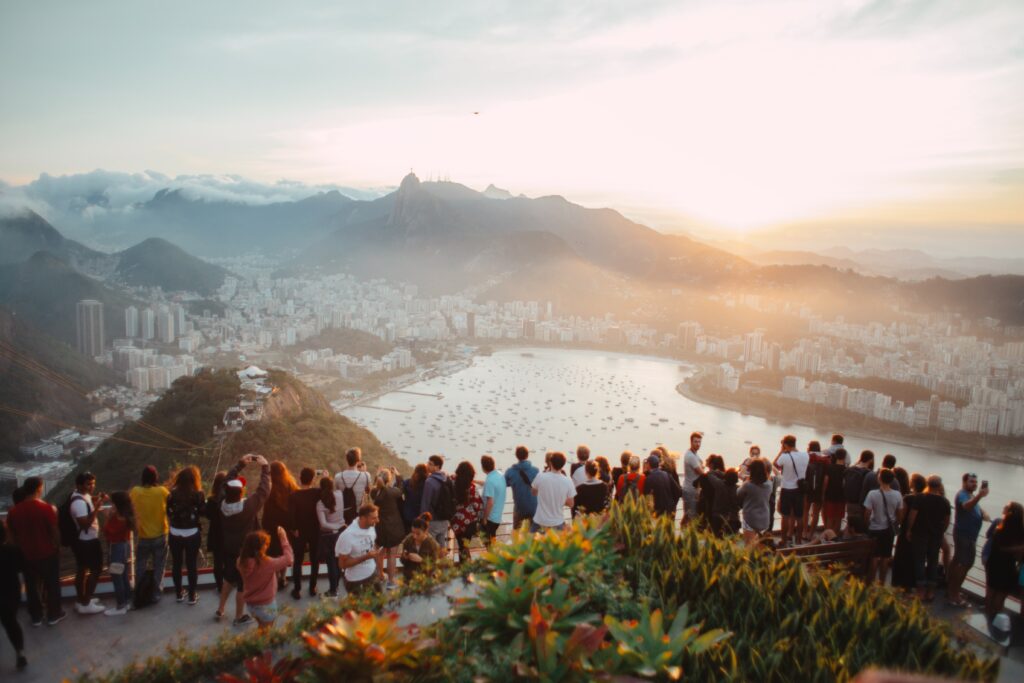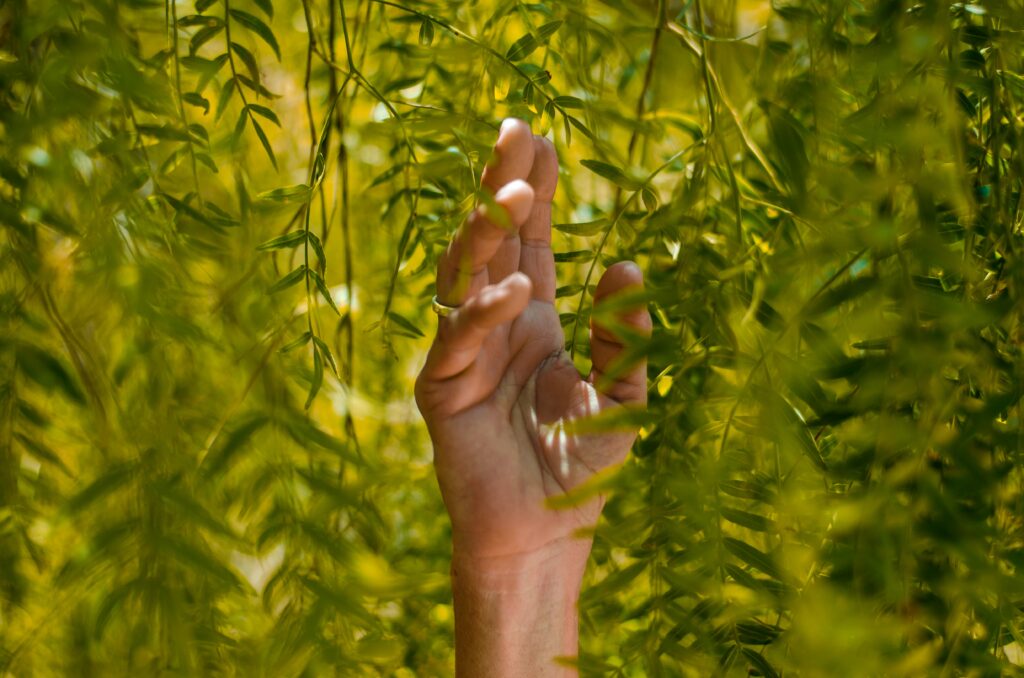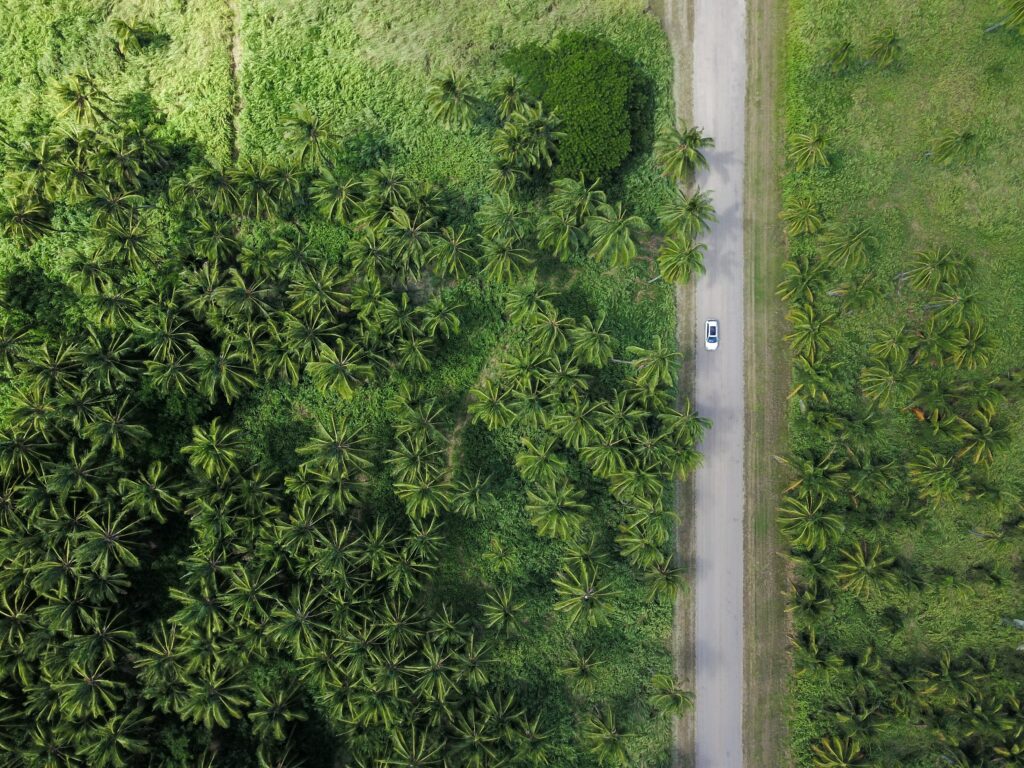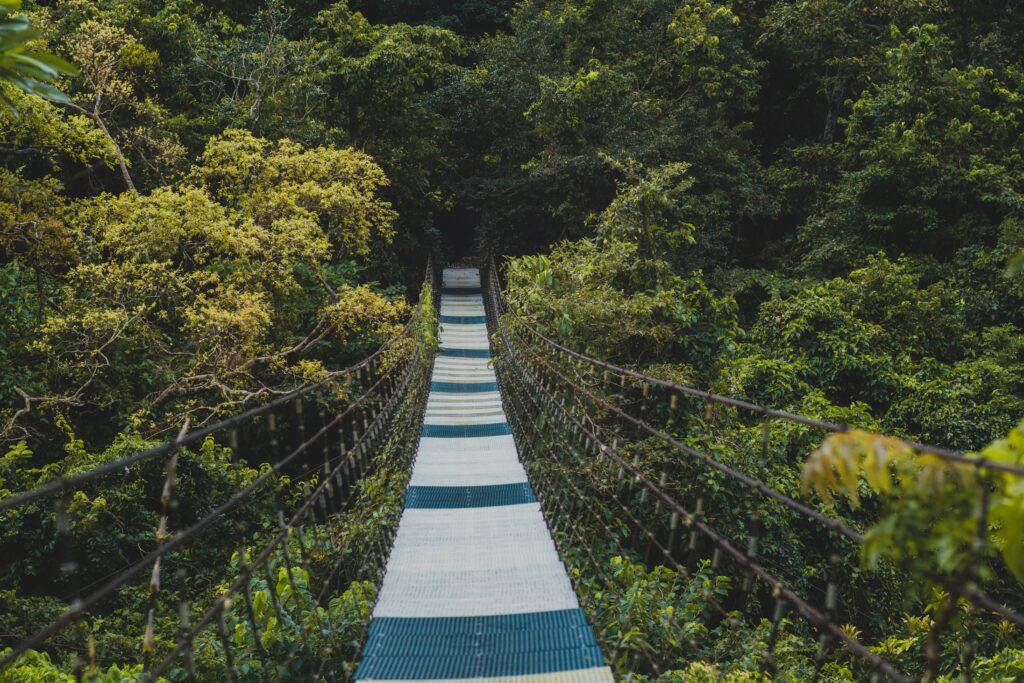When I heard this month was going to have a focus on sustainable travel here at Wildbum, I got so excited! If you follow me, have read my blogs or purchased my guides you know sustainable travel is something I am very passionate about.
The first thing you might be thinking is- sustainable travel sounds awesome but what EXACTLY is it? Sustainable travel encompasses many aspects of travel that together help protect not just our planet and wildlife but the local communities we visit as well as their culture and livelihood.
Over Tourism
“Over Tourism” is probably a phrase you have heard by now, tourism has increased SO MUCH (at least prior to the halt that is Covid- although we all know travel will have a strong comeback!) that cities and communities around the globe, as well as mother nature were starting to suffer!
Now we all love travel, and let’s be honest- none of us plan to give it up. So, how do we protect these places from, well… us? Well good news is that sustainable travel doesn’t put a damper on your trip, in my opinion it only enhances your travel experience (by a lot) and protects communities from being over run, gems from being polluted and insteads helps support and preserve these places not just for future travels but for the people that live there year round and for the health of the planet itself- the true home for all of us.
What a shame to lose the beauty of a place that once was. For the whole reason we went somewhere in the first place to suddenly be gone, replaced by a “newer/bigger/better/Insta worthy” tourist trap.

My Own Experience
My first personal experience with this was Tulum Mexico. There’s actually a great article called “Who Killed Tulum?” that you can read HERE. Having lived in Mexico for a bit, Tulum was one of my favorite places. One single dirt road and cash pesos only (the closest ATM was at the town bank a 15 minute drive away). I remember biking from the beach to Gran Cenote, kayaking through mangroves and wandering around the dirt paths to get from our cabanas to the ruins. It was a dusty hidden area with nothing but stars at night when the generator run electricity was shut off. My first time in Tulum was in 2009, my last time in Tulum was in 2017 and I said I wouldn’t go back.
Now, I don’t know that I actually won’t go back lol but for me it was “ruined” in a way. I saw a paved road flowing with busy traffic, overpriced acai smoothie bowl stands and wellness workshops. It was crowded and on the way to Gran Cenote we were on a highway, no longer a simple empty dirt road. The night had more hotel lights and where nothing but acres of jungle once stood, were now new developments and music of late night parties sounded at night instead of just sounds of ocean and bugs.
The bad side isn’t just the surface change and disappearance of a lovely place to a hipster Insta destination, but environmentally the area simply can’t handle it and a place that once had little to no human produced lights and sounds at night to a spot known for its beach parties has a great effect on the wildlife. Bordering Sian Ka’an biosphere the overload of tourists and their garbage threatens the delicate ecosystem and this is just one place that I have personal experience with but this is happening all over the globe.
That being said many people go to Tulum every year and come back saying how amazing it was, and it is still a beautiful place but they also have no comparison to what it used to be and that’s the case for many of us experiencing a new place for the first time.

You are a Visitor
The first thing to remember is that you are a visitor but the place where you are visiting is also a home for many. In addition you are also a very small spec in the realm of the MILLIONS of travelers that visit just one individual city or attraction every year and an even smaller spec in the 1.2 BILLION (and growing) people who board international flights annually. So how do we change this? By protecting mother earth and supporting/preserving local communities through the way that we travel.
UN World Tourism Organization’s definition of sustainable tourism:
“Tourism that takes full account of its current and future economic, social and environmental impacts, addressing the needs of visitors, the industry, the environment and host communities.”
PROTECTING MOTHER EARTH
Transportation-
Transportation has the biggest environmental impact of all the components of travel. Did you know that cruising is the most polluting form of travel? It actually produces 4 x more carbon dioxide per passenger mile than a jet, and to boot a cruise has many more passengers on it than a plane does. In addition several cruise lines have been known to dump waste into the ocean and although they are fined for this the cruise lines continue running. So my first rule for sustainable travel is to not cruise, not only does this greatly cut down on pollution but it also provides you the opportunity to support (and actually experience) local communities. The second largest culprit is the obvious one- flying.
So, how do we help that? Flying as we all know is pretty much necessary for travel. Well, if traveling domestically aim to road trip or do a train journey instead. Even when traveling abroad try to fly as little as possible. This means flying non-stop when it’s available to you and only flying to/from your destination and not within. An example would be flying to Europe but utilizing the amazing rail system to country or city hop instead of flying place to place, don’t get back on a plane until you are going home and when in cities aim to walk or bike as much as possible instead of using taxis. Not only does this help the planet but it also will give you a much more faceted and authentic experience.

Minimize waste-
Leave a bit of space in your bag for some basic reusable items like a water bottle, straw, shopping bag and your own headphones for the flight. Even in countries where tap water isn’t drinkable usually hotels and hostels have a community water cooler to provide filtered water or you can get a water bottle with a built in filter. These alone will help so much, especially in countries that don’t have recycling programs.
Of course, when possible aiming to recycle or compost in countries that do have these programs is equally important. You can also work to minimize waste by taking leftovers with you, either to your hostel kitchen or hotel room fridge or even by giving them to a homeless person. In Egypt we would take our leftovers with us for the kids on the street. Water waste is another big one especially in countries that struggle with clean water supply, be sure not to leave the faucet or shower running for too long.
Carbon offset and renewable biofuels-
Carbon offset programs are the perfect way to offset the carbon from your flights and reduce your carbon footprint. Firstly you want to verify that the program you are utilizing is legitimate, you can do this by looking for VCS (Verified Carbon Standard) and VER (Verified Emission Reduction) programs. There are several great options out there but I highly recommend this article all about carbon offset programs so you can see the different types of projects that varied carbon offset programs participate in HERE. In addition to carbon offset you can also aim to fly with airlines that both invest in and utilize renewable biofuels such as American Airlines, KLM, Qantas, JetBlue and Lufthansa.
Ethical animal tourism-
This is so important! I know we all love to see animals, especially amazing animals like elephants but many types of animal tourism are actually hurting those same animals that we love. Common culprits are attractions for elephant riding, tiger temples, dolphin parks and animal photo-ops with monkeys or even parrots and iguanas on street corners. Instead, visit verified animal sanctuaries and rescue centers that don’t allow any riding.
Another option is to do hikes, snorkel trips or safaris and other outdoor activities where you can see wildlife in their natural habitat. Anything that seems completely unnatural (like taking photos with a drugged tiger or an elephant doing a dance on it’s hind legs) should be a red flag to know that regardless of what they may say, it is not a healthy environment for the animal and you do not want to support those establishments in any way. I personally loved the Wildlife Friends Foundation Thailand (WFFT) sanctuary, we got to see rescued elephants as well as various other types of animals and you can also volunteer for a 2 week stay to care for the animals up close if you desire more than a day visit. Hiking in Costa Rica and seeing the sloths and monkeys as well as various other wildlife was equally rewarding.

Sustainable Practices-
Do your research, especially when it comes to your accommodations and tour companies. Most will proudly display their certifications or display a list of what they do to support the environment and local communities right on their website. Some good examples would be GAdventures , Urban Adventures , Selina Hostels , and Haida Tourism. Looking for descriptive information (like displayed on these pages) that review the practices of the accommodations or tour company is integral to knowing that you’re making a good choice.
SUPPORTING AND PRESERVING LOCAL COMMUNITIES
Accommodation-
Book your stay at local hotels (or hostels) and avoid large international corporate chains. In addition, avoid AirBNB and other home rental programs when you can. Why? First of all, you want the money you’re spending to go back into the country you are visiting instead of being funneled out of the country, this way you know your funds are going into the local economy.
Secondly, a locally run hotel or hostel provides local jobs, a lot of them. Managers, maids, cooks, front desk clerks, maintenance, gardening, bellhop and the list goes on and on. Staying at a local establishment continues to help that establishment be able to in turn provide local jobs whereas staying at a home rental doesn’t support local jobs at all. In addition it can have a laundry list of adverse effects like taking homes off the market, causing increase in local rents, strain on local communities, loss of income for local run hotel businesses causing some struggling businesses to lay off workers or completely shut down, in popular destinations this can even lead to gentrification.
If a home rental is necessary (such as a large family or group trip) try to find companies that either specifically have serviced multi-room villas or apartments like – these are hospitality businesses like hotels but they offer apartment style or villa style accommodations instead of just rooms. If you do opt for a personal rental via AirBNB or other similar providers be sure that you are renting from an individual and not a businessman this is easy to check by seeing that the “host” has 1 personal property that they rent out, not a collection of several. This also applies to tour companies which is one of the reasons I love GAdventures, all their chosen accommodations are locally run. Similarly, if you do stay at a multiple destination property make sure it is locally run and supports the community it is a part of (such as Selina hostels).

Support local businesses-
We already spoke about supporting local businesses in terms of accommodation but it’s important to support local businesses in all aspects! This includes tours, shops, restaurants etc. For tours I love to use Urban Adventures, not only are all their local guides actually locals who call your destination their home, but their tours are meant to take you off the beaten path. You will have foodie experiences at local restaurants or even in local’s homes and you will visit lesser known sights and marketplaces. I have booked through them for various cities but one of my favorites was the cenote tour in Playa del Carmen Mexico called Maya Underworld. Not only was our guide amazing and extremely passionate about caving but we were the only ones there! A much more rewarding experience compared to going to a huge tourist park like Rio Secreto.
Avoid peak travel seasons-
Every destination has a peak season. Ex- Europe tends to be most popular during summer months whereas tropical destinations like the Caribbean tend to be most popular during winter and spring breaks etc. In addition avoiding peak seasons will also save you money because high season rates are always simply higher. If you can I would aim to avoid high seasons (winter break, spring break, holidays etc.) in general. Instead, travel during early May or try late Sept- early Nov for example but, for those that work as teachers there may be no other option. In this case focus on destination, maybe head to Germany during your winter break and Costa Rica over the summer.
Get off the beaten path-
Of course we all want to see those main cities and major sites but that’s exactly where everyone is going so why not try something different? I think we have all been guilty at times of city hopping, especially when trying to squeeze in as much as possible into a limited trip. Or how about the classic London/Paris combo for example? Well not only are you quite literally only going to the most crowded and touristic areas but you are completely missing out on what the country truly holds! To me travel is about discovering the hidden gems that a country didn’t even know they were hiding. Imagine traveling to the US and only visiting NYC but missing out on the canyons, mountains, lakes, beaches and everything else there is to see!
It’s an injustice both to yourself and the country you are visiting. In addition traveling outside those main hubs will relieve touristic strain in major cities, increase tourism based income in smaller communities and open you up to a whole new world of experiences. In most of my larger regional guides I tend to touch on those popular areas because let’s face it, it’s what everyone is wondering about but I also go over all the smaller surrounding areas and how lovely they are and that you should leave behind Cancun for Puerto Morelos.
Why? Because I truly believe that that is where the magic happens. Sure, stop in Beijing – it’s the easiest airport to fly directly into and the closest spot to head to see the Great Wall but after those 2 days hop a train and head to Suzhou and tell me it isn’t undeniably more lovely than Beijing could ever dream of being.
Respect local culture-
This plays into a lot of factors but being sure you do your research (aka get your Wildbum guide) and you have an idea what is or isn’t appropriate in various destinations is super important. Is tipping part of the culture? If so, how much is acceptable. What about clothing? Especially for women traveling to the Middle East being conscious of the fact that it is a more modest culture and aiming to keep knees and shoulders covered and packing that one piece swimsuit instead of your bikini and short shorts that we would all love to wear in that dreadful heat- is really important! Not only for your own safety as far as deterring unwanted attention but also in general just respecting that again you are a visitor in someone else’s home, respecting their culture is of utmost importance.
Lastly, I want to touch on language, please don’t be that person that expects everyone else to cater to you and know how to fluently speak a second language (english) without even making an effort to speak the native language of where you are visiting. Even if traveling with a guide, be sure to at the very least be able to say “hello” and “thank you” is usually greatly appreciated by the locals and keeping a pocket book or app handy for translation is also a great tool.
What are your favorite practices or tips for sustainable travel? Whether environmentally or culturally we would love to hear!






